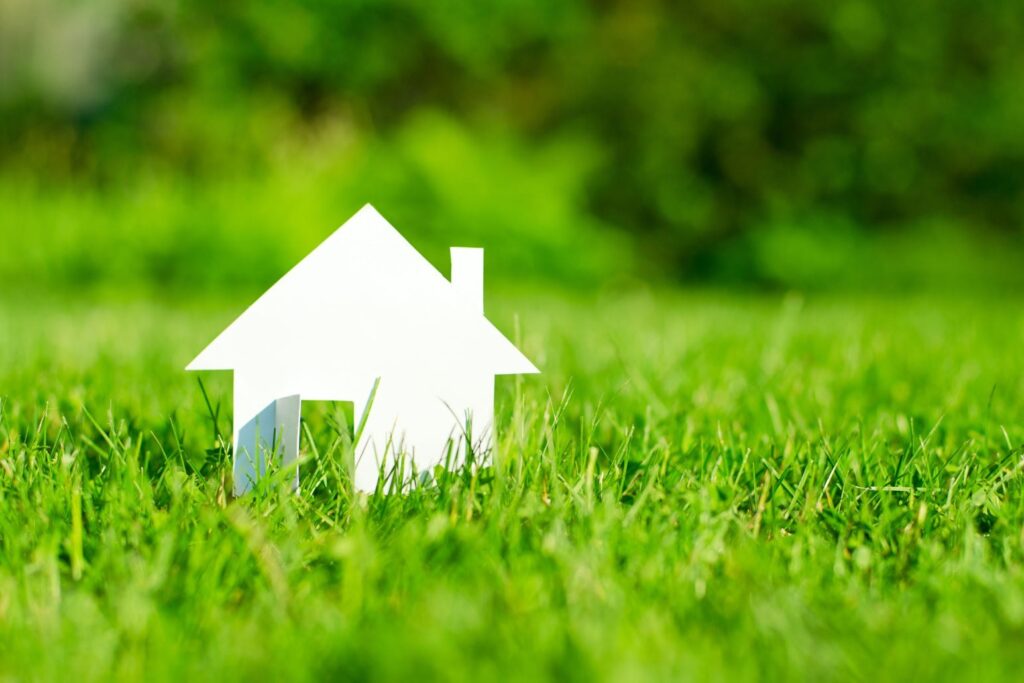Green mortgages might feel like a relatively new concept.
However, they’ve been around for several years – with the very first green mortgage launched back in the early 1980s.
With the UK placing more focus on climate change and energy-efficiency in properties, though, the number of green mortgages available and the coverage they’re getting are increasing.
Here, we’ll explain what green mortgages are, how they work and who is eligible.
We’ll also reveal some of the energy improvements you could make to your home, so it qualifies for a green mortgage.
What is a green mortgage?
A green mortgage is a type of home loan specifically for buyers purchasing an energy efficient home or existing homeowners making energy efficiency improvements.
Green mortgages usually offer buyers or homeowners remortgaging an incentive to either buy an energy efficient home or make improvements to an existing property.
Incentives through green mortgages include cashback or a more attractive interest rate compared with standard mortgages.
Green mortgages are part of the UK’s pledge to reach net zero carbon emissions by 2050, with the energy efficiency of property a key part of that quest.
The government hopes all properties in the UK will have an Energy Performance Certificate (EPC) rating of at least ‘C’ by 2035.
It’s hoped green mortgages will either encourage buyers to purchase more energy efficient homes or upgrade their existing properties.
What is an EPC rating?
An Energy Performance Certificate (EPC) shows how energy efficient a property is by using a sliding rating scale of A to G.
The most energy efficient homes are those rated A, while the least energy efficient are rated G.
The average rating in the UK is currently D, with a government target hoping that all UK homes will be rated A-C by 2035.
How do green mortgages work?
Green mortgages offer rate discounts or cashback if you buy an energy efficient home or improve the one you already own.
Discounts offered on green mortgage interest rates compared with standard mortgages are often around 0.1%, while cashback offers through green mortgages are usually between £350 and £999.
Essentially, green mortgages are available for:
1. Buyers
To qualify for a green mortgage when you’re buying a new home, you must either:
- Be buying a property with an A or B EPC rating
- Be remortgaging to a green mortgage on your existing home that has an A or B EPC rating
Other green mortgages offer cashback or improved rates to borrowers who improve their property’s efficiency to an A or B rating after moving in.
2. Remortgages or additional borrowing
Some lenders offer green remortgages to existing borrowers, as well as additional borrowing on a ‘green’ rate where affordable.
A green remortgage rate may be available if you can show your lender that you’ve improved your property’s energy efficiency since you originally purchased it.
With additional borrowing on a green mortgage, you would need to agree to spend a certain percentage of what you borrow on improving your home’s energy efficiency.
3. Property investors and landlords
Some lenders offer green buy-to-let mortgages for landlords and property investors.
Like residential green mortgages, green buy-to-let loans are available for purchases and through additional borrowing to complete energy efficiency improvements.
Many green buy-to-let mortgages are available for properties rated A to C on their EPC, with landlords already required to have a rating of at least E to legally rent out a property to tenants.
What qualifies for a green mortgage?
To qualify for a green mortgage the property you’re buying must meet a certain Energy Performance Certificate (EPC) rating.
This is usually an A or B rating, while many lenders also have a maximum loan-to-value (LTV) for green mortgages, often 85%.
To qualify for additional borrowing under a green remortgage, your lender will most likely insist that energy efficiency work is carried out within a certain period, bringing your property up to an A or B EPC rating.
As with any residential mortgage, you’ll also need to meet your lender’s individual criteria
Who offers green mortgages?
Some of the UK’s biggest lenders are offering green mortgages, including:
- Barclays
- NatWest
- Nationwide
- Halifax
- Santander
Can you get a green mortgage on an eco-house?
Eco houses are sometimes classed by mortgage lenders as ‘unusual builds’ and this can make securing a mortgage on one more difficult.
To secure a green mortgage on an eco-house, you may need a larger deposit with your lender likely to impose a maximum loan-to-value (LTV) on any mortgage.
The pros and cons of green mortgages
Although green mortgages come with incentives compared with standard mortgages, there are still some cons you’ll need to consider alongside those pros:
Green mortgage pros
- A lower mortgage interest rate, meaning cheaper repayments
- Lower energy bills through a more energy efficient property
- Possible cashback from your lender
- A reduced carbon footprint
Green mortgage cons
- Green mortgage rates aren’t always cheaper than another lender’s standard mortgage rates
- Not all lenders offer green mortgages, meaning limited choice
- Costs to improve a property to an A or B EPC rating may be substantial
Energy efficiency improvements you could make with a green mortgage
There are a whole host of steps you can take to improve your property’s energy efficiency, so it qualifies for a green mortgage, including:
1. Installing solar panels
Solar energy uses the heat of the sun to create electricity.
As well as reducing your carbon footprint, solar panels can save you huge amounts on your annual electricity bill – sometimes up to £500.
2. Roof, loft, or cavity wall insulation
Up to a quarter of heat is lost through the roof in uninsulated homes.
In a detached house, it’s estimated loft insulation alone saves more than £300 per year.
Cavity wall insulation is also a great way to keep heat in and can also help to save around £300 from an annual energy bill.
3. Upgrading your boiler
An energy efficient boiler could save you up to £135 per year in a detached house.
So, if your boiler is feeling its age, a new condensing unit could be a great option.
4. Energy efficient doors and windows
Modern double-glazed windows are superb at keeping heat in your property and reducing both your bills and your carbon emissions.
Modern composite doors, too, are built with energy efficiency in mind, while retaining the look and feel of a wooden door.
5. Fitting a ground source or air source heat pump
The government’s heat and buildings strategy sets out a timeline for the removal of domestic gas boilers from UK homes, which will be replaced by air source or ground source heat pumps.
The pumps use warmth from the earth or air and transfer it into heated water through radiators.
Further reading…
- How to boost your property’s energy performance
- Eco upgrades that could add value to your home
- First-time buyer? Here’s the help available
Still have questions? Contact your local Whitegates branch today.




